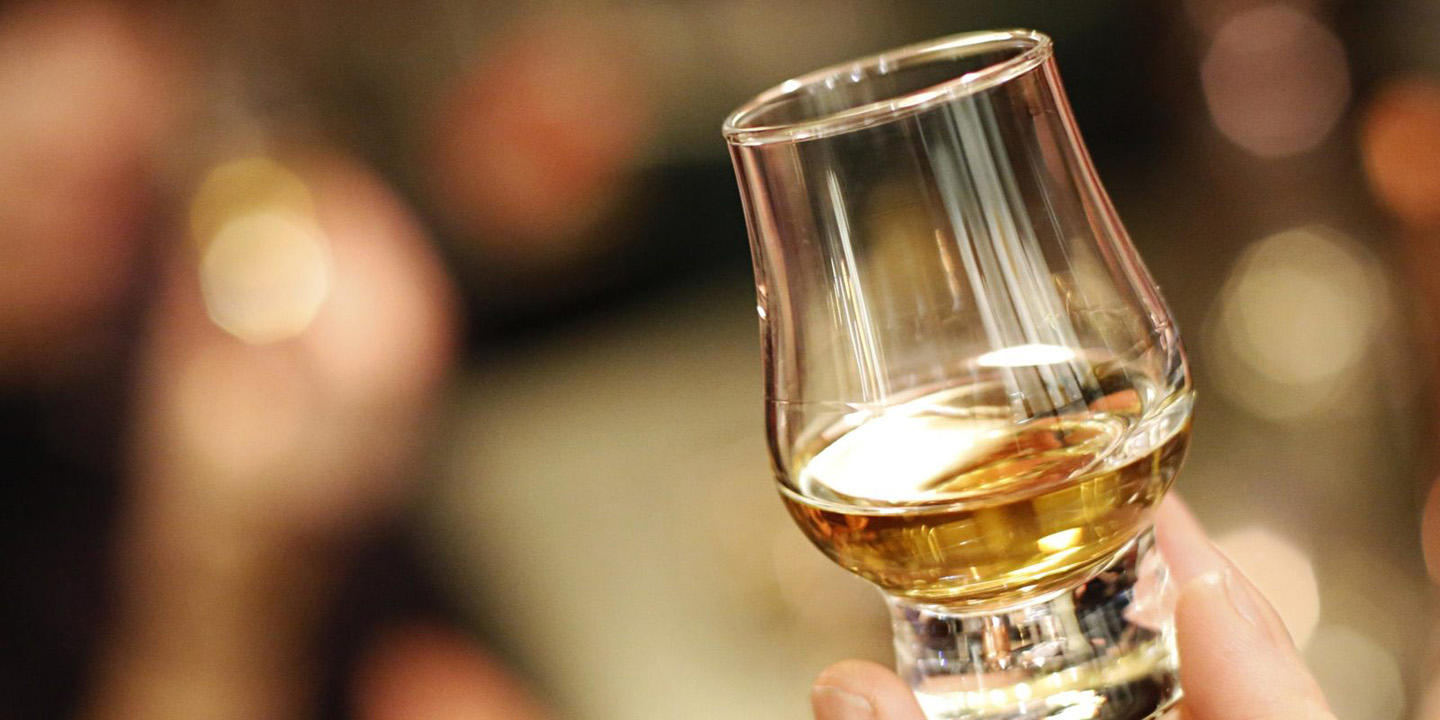A Guide To Drinking Whisky
Learn Whisky
There are countless words used to describe the complex flavour of good whisky. Rich, heavy, light, and fruity are some common descriptions, while burnt chocolate, peppery, and herbal are some of the more unique ones.
It is all too easy to get lost in the countless different flavours and colours, and perhaps take a step back, intimidated by the limitless world of single malt whiskies. But tasting whisky isn’t as complicated as you may think and with a touch of experience, open-mindedness and passion you too can develop the palate needed to describe any whisky that touches your lips.
Here are the steps to take when tasting a new single malt or when revisiting an old favourite.
Choose The Right Glass
While this is not the most important part of tasting whisky, it does help to have the right glassware during a whisky tasting. As a rule of thumb aim to taste from a glass with a narrow opening at the top. This shape helps concentrate the whisky’s aromas, making it easier for them to be inhaled straight into the nostrils. Typical whisky tasting glasses are called snifters, although wine glasses and brandy balloons will work to the same effect.
Tumblers should be avoided during whisky tastings as the shape of the glass allows the aromas to escape too quickly. Use these when consuming whisky with ice, and when careful taste analysis isn’t needed. Unfortunately, many bars that don’t specialize in whisky do not stock snifters.
Examine The Appearance
Hold your appropriate glass up at eye level, against a neutral background and look closely. The colour of the whisky prepares you for flavours to come, and will provide information on the whisky’s maturation and age.
Whiskies matured in oak and bourbon casks will be light and bright in colour while sherry-cask aged whiskies tend to turn different shades of amber.
Younger whiskies may be lighter, and older, well-aged whiskies often have a richer, heavier colour.
The Nose
After a good look swirl your glass around to help the whisky come into contact with oxygen and start to evaporate. As the malt has been “trapped” in a cask or a bottle for all of its life it is important to give it some time to breathe and take more than a few whiffs in order to experience all that the whisky has to offer.
While the first whiff may be full of alcohol, the second and third will start to show the true character of the whisky as your nostrils adapt to the spirit’s strength.
Look for sweet, spicy, floral, and woody fragrances and anything else that comes to mind. Whisky aromas may remind you of many things, so let your mind go and grab on to any flavour memories that may surface.
Experts say that the majority of our taste sensations come from our sense of smell, so be sure to let your nose truly assess the whisky before it even touches you lips.
The Palate
Now for the fun part… drinking the whisky. To start with don’t get excited and drink the sample too fast. This high-quality product has been aged for many years and the flavours that have been created during this time must be experienced with patience.
As different parts of both the tongue and mouth break-down flavours differently, it is important to pass the whisky around, allowing it to touch the many surfaces within your mouth.
After this you swallow. And the time comes to focus on the sensations in your mouth and throat. How is the “mouthfeel”? Is it smooth and creamy, or light and crisp?
Describe the taste. Fruity, nutty or smoky? Did you detect any fruit, honey, or toffee? Anything else that comes to mind?
Similar to aromas, it is important to let your mind roam free, and catch any and all flavours that you feel are delivered. There are no wrong answers and, as everyone’s palate is different, the flavours each of us detect will also differ.
At first, the alcoholic burn after swallowing may be uncomfortable, but bare with it, the beauty of great whisky greatly outweighs the initial, uncomfortable sensation.
The Finish
The finish is the aftertaste that comes after the whisky has been swallowed, and its complexity is what sets whisky apart from other spirits. Older, well-aged whiskies may offer a finish which lasts for hours while younger whiskies disappear faster. The finish of a whisky is usually described as sharp, dry, warm, or clean and crisp.
Subtle flavours are known to come through during the finish that weren’t evident before, so focus your attention on detecting new flavours that came through after you swallowed the whisky.
The Notes & Etiquette
There are a few points to remember which will make you and everyone around you enjoy each and every whisky tasting attended.
Don’t judge or be condescending towards others and the flavours they perceive. No one is wrong and if someone tastes something you don’t or vice versa, it just means your palates are different. Aiming to educate brings the whole world of whisky closer together.
Don’t drink the whisky too fast. The excellent whisky in front of you has been maturing for years and needs time to “open up” and release all the flavours that have been building up during that time.
Adding water to a dram has been known to release more aromas while reducing the alcohol strength, taking that sharp alcoholic edge out of the experience. Some take a few drops while others take a splash. We recommend experimenting, to find the perfect amount for you.
Try the above techniques with our exclusive 18-year old Clynefish. Look for the North Highland character and smoothness in this single malt. Surprising, as it’s been bottled at cask strength, coming in at 52.00 %.



